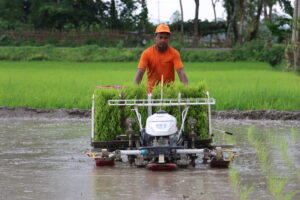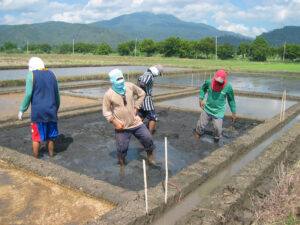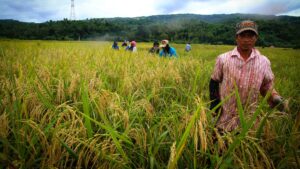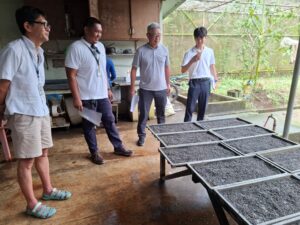Last July 31, 2025, IRRI joined partner CGIAR Centers at a media visit hosted by the Global Development and Health Communication Center (GDHCC) with the Gates Foundation to explore the innovations and impact of CGIAR work in Africa. Read how IRRI Researcher Everlyne Nganga explains the changing dynamics of rice farming and malaria-causing mosquitoes in Africa.
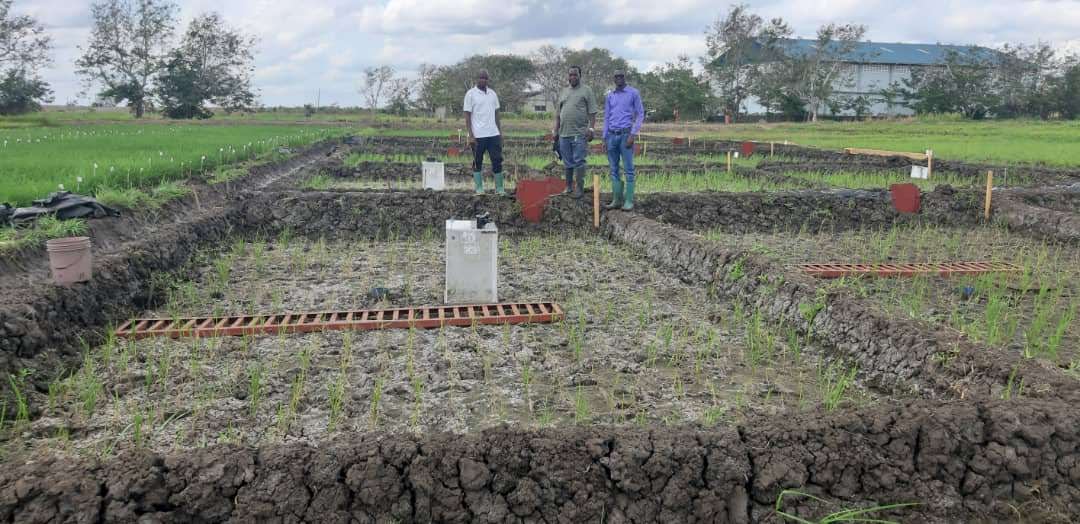
Rice fields in Africa are breeding grounds for several malaria-causing mosquitoes, the most important of which is Anopheles gambiae complex. This complex carries the most dangerous malaria parasite called Plasmodium falciparum, which accounts for 90% of the world’s malaria mortality. Despite this, in the early 1990s, research showed that malaria cases were not higher in rice-farming villages than those without rice fields. This is the “Paddies Paradox”. Rice fields are breeding grounds for malaria vectors, yet farming communities recorded fewer malaria cases. The malaria mystery was attributed to two main reasons: first, some of the mosquito species that grew in the rice field were less harmful, and second, the increased income from rice farming helped farmers access better healthcare, antimalarials, and mosquito nets.
However, there have been recent developments in the relationship between rice production and malaria in Africa. Initial research results have shown that communities living near rice irrigation schemes are now more exposed to malaria. A study by the London School of Hygiene and Tropical Medicine showed that for every one hectare of irrigated rice, about 700,000 malaria vectors develop during a single cropping season.
Since interventions to combat malaria were significantly and equitably scaled across Africa, we can no longer assume that non-rice growing communities are less protected against the disease. Furthermore, as governments position rice as a strategic crop for national food security, more land is needed to increase rice production. This means more rice will be produced to meet these growing demands. Still, irrigation is required, so there are now greater areas of opportunity for malaria-causing mosquitoes to develop. The end of the Paddies Paradox spells a significant threat to rice production in Africa.
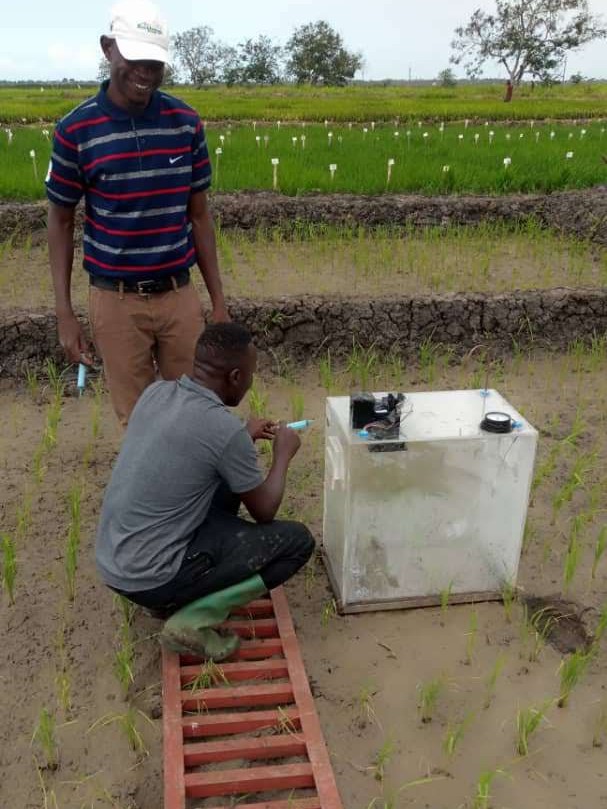
IRRI, in partnership with the London School of Hygiene and Tropical Medicine, is studying how malaria can be addressed as a part of the ecosystem. We are looking at how rice and its surrounding environment may drive epidemics in the field and how we can control and prevent health disasters from happening. Complementary solutions applied at different stages of rice growth have shown less malarial vector spread. This includes sustainable water management practices like the alternate wetting and drying technique (AWD). IRRI and its partners originally developed AWD to mitigate greenhouse gas emissions, but this method exhibited potential for controlling malaria vectors and saving irrigated water. AWD entails irrigating, then letting the fields dry until the water level reaches 15cm below the surface, consequently breaking the breeding cycle and preventing mosquito growth. Rice-fish co-culture also exhibited a greater reduction in malaria vectors at 82% compared to biological and chemical larvicides, which eliminated 60% and 77% of the vectors, respectively.
Putting food on the table does not have to come at the cost of the nation’s health. Rice has been a staple in Asian diets and is growing into a preferred food in African households. The demand is rising, yet there is an emerging threat. However, we should not shy away from an opportunity to achieve regional food and livelihood security when we can drive impactful research, which can also tackle a major health problem such as malaria. The recent findings of how intensified rice production could affect malaria vector spread ask us to re-focus our attention on this emerging threat before it is too late.


